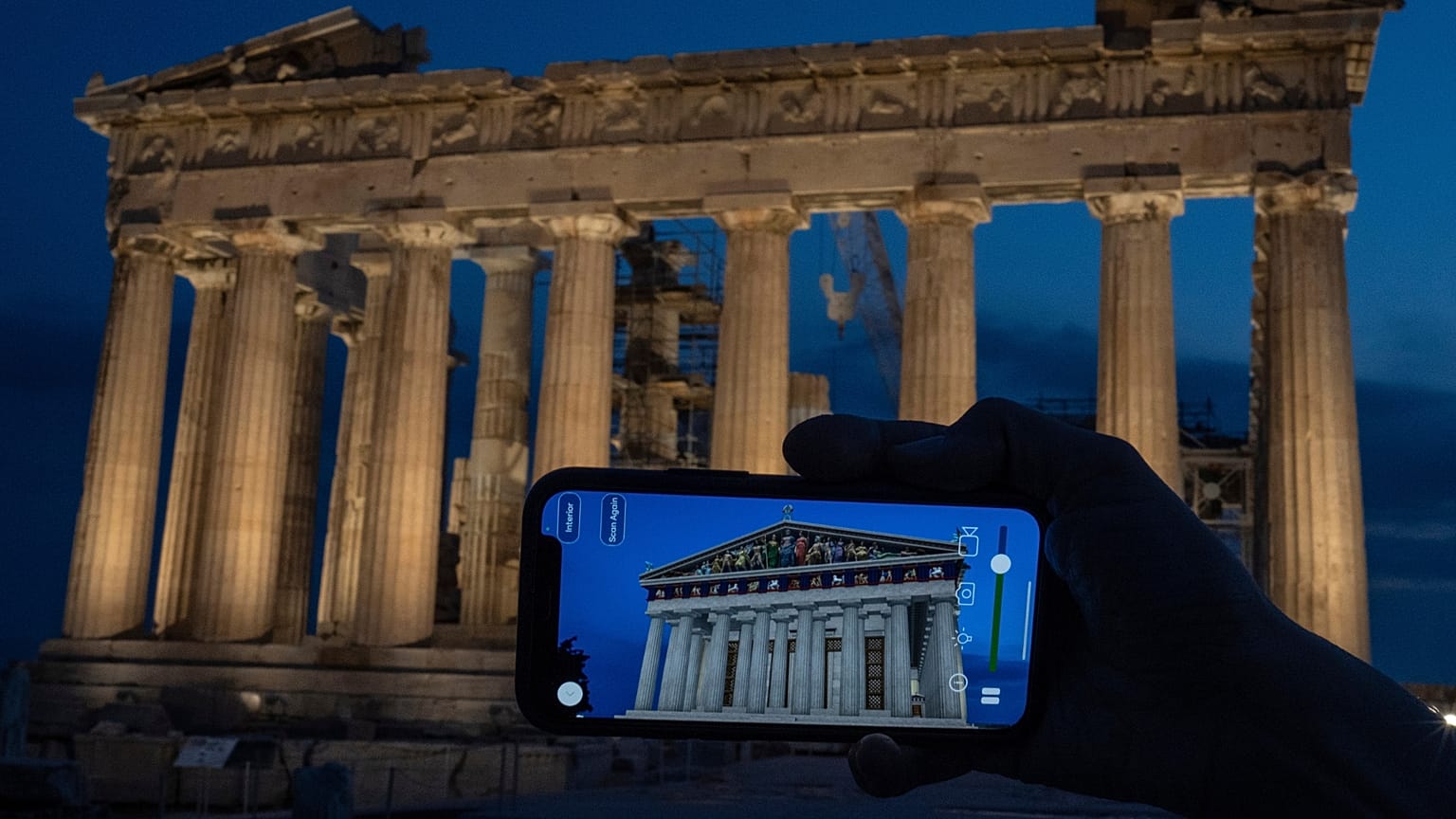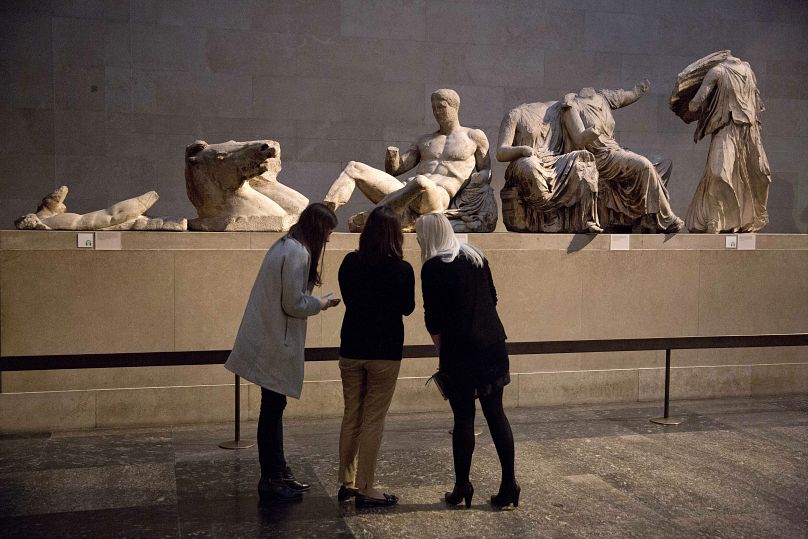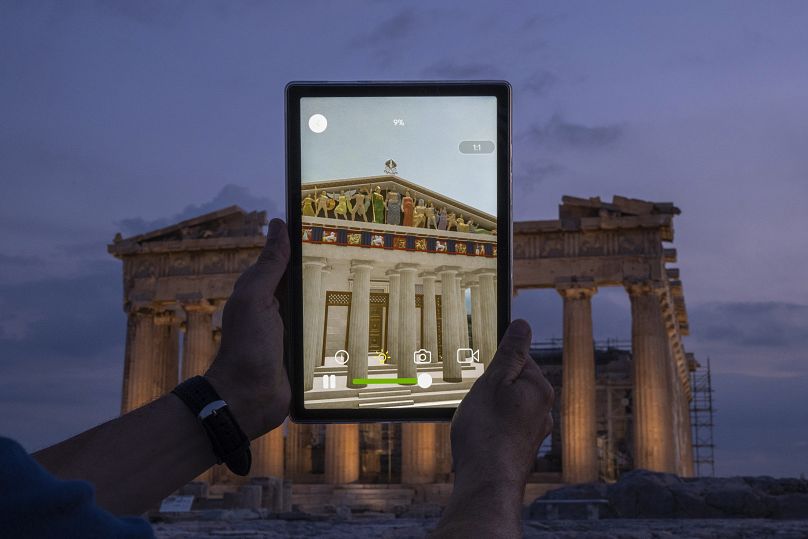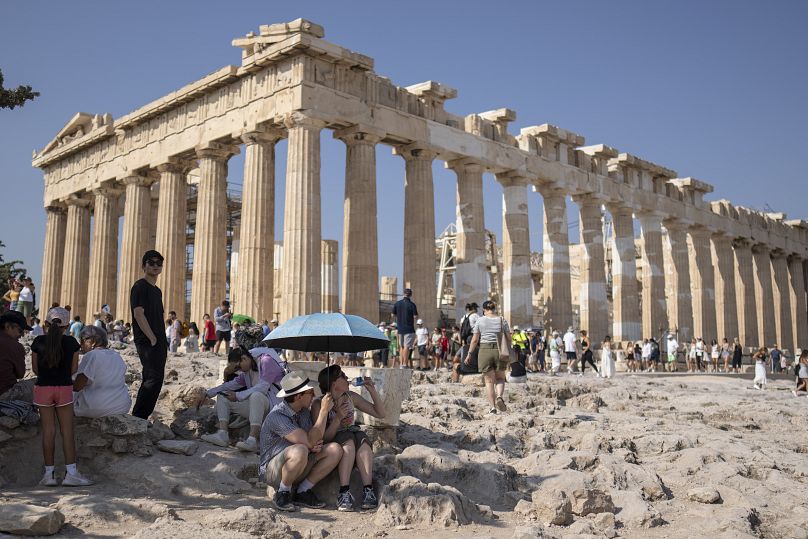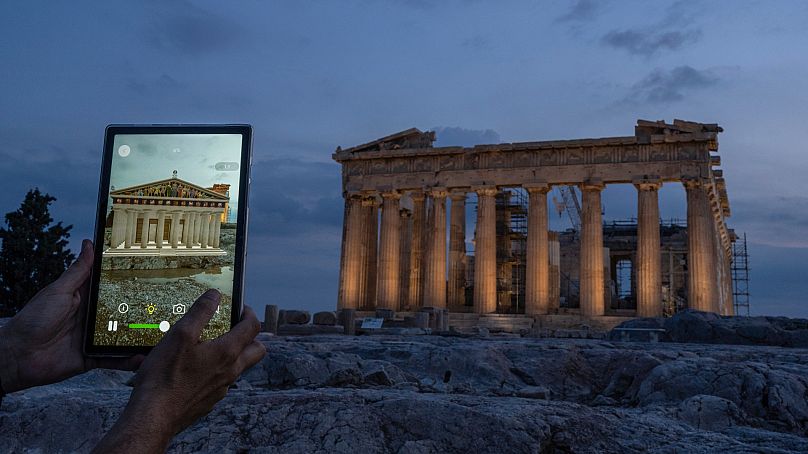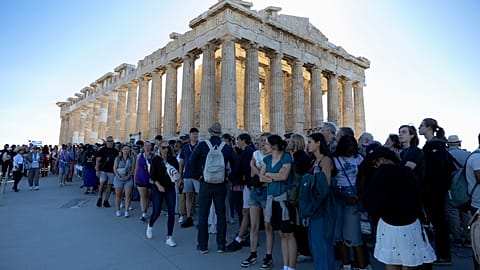The app, called "Chronos" for the Greek god of time, means to entice visitors to learn more about Greece's most popular archaeological site.
Ever wondered what the Parthenon in Athens looked like back in its heyday?
Visitors to the Acropolis – armed with a smartphone – can now take a peek into the past, pinching and zooming their way around the ancient Greek site, with a digital overlay showing how it once looked, as far back as the 5th century BC.
A new augmented reality app called “Chronos,” supported by Greece’s Culture Ministry, allows people to point their phones at the Parthenon temple and see what archaeologists believe it looked like 2,500 years ago.
In the digital rendering of Greece’s most popular archaeological site, a collection of marble sculptures – widely known as the Parthenon Marbles, or Elgin Marbles – are perched on top of the temple.
The Parthenon marbles were removed from this location more than 200 years ago and are now on display at the British Museum in London, a point of contention between the British and the Greeks. Greece has demanded on several occasions that they be returned.
A new way to experience history
The app also shows off lesser-known features of the site, some of which have only recently been discovered – like the fact that many of the sculptures on top of the acropolis were painted in striking colours, or that the giant statue of goddess Athena in the main chambre stood over a shallow pool of water.
Greece’s Culture Ministry hopes the augmented reality app will get more people interested in learning the history behind the ancient site.
The national tourism authority hopes it will make Athens more appealing to tourists in the off-season.
Shriya Parsotam Chitnavis, a tourist from London who was visiting the hilltop this month, told the Associated Press that the app improved her experience at the Acropolis.
“I didn’t know much about the (Acropolis), and I had to be convinced to come up here,” she said. “Seeing this has made it more interesting – seeing it in colour.”
The virtual restoration works from anywhere, so it could spare visitors the crowded uphill walk and long wait to see the iconic monuments up close.
It also fits into the government’s greater strategy of making Greece’s ancient monuments more accessible, following the recent installation of ramps and anti-slip pathways.
“Accessibility is extending to the digital space,” said Culture Minister Lina Mendoni at the launch event for the Chronos app in May. “Real visitors and virtual visitors anywhere around the world can share historical knowledge.”
Technology as a window into ancient Greece
Greece’s Culture Ministry and national tourism authority are late but enthusiastic converts to technology. They’ve tapped into the video game fandoms and partnered with major players in the global tech industry.
In 2018, Greece organised a trip for Chinese winners of a photo contest in the game Assassin’s Creed Odyssey, which allows players to roam ancient Athens.
Microsoft partnered with the Culture Ministry two years ago to launch an immersive digital tour at ancient Olympia, the birthplace of the Olympic Games in southern Greece.
The Chronos app’s designers say they hope to build on existing features that include an artificial intelligence-powered virtual guide named Clio.
“As technologies and networks advance, with better bandwidth and lower latencies, mobile devices will be able to download even higher-quality content,” said Panayiotis Gabrielides, a senior official at the Greek telecom company Cosmote involved in the project.
For now, virtual reconstructions using Chronos cover four monuments at the Acropolis, including the Parthenon, an adjacent Roman theatre and parts of the Acropolis Museum built at the foot of the rock.















